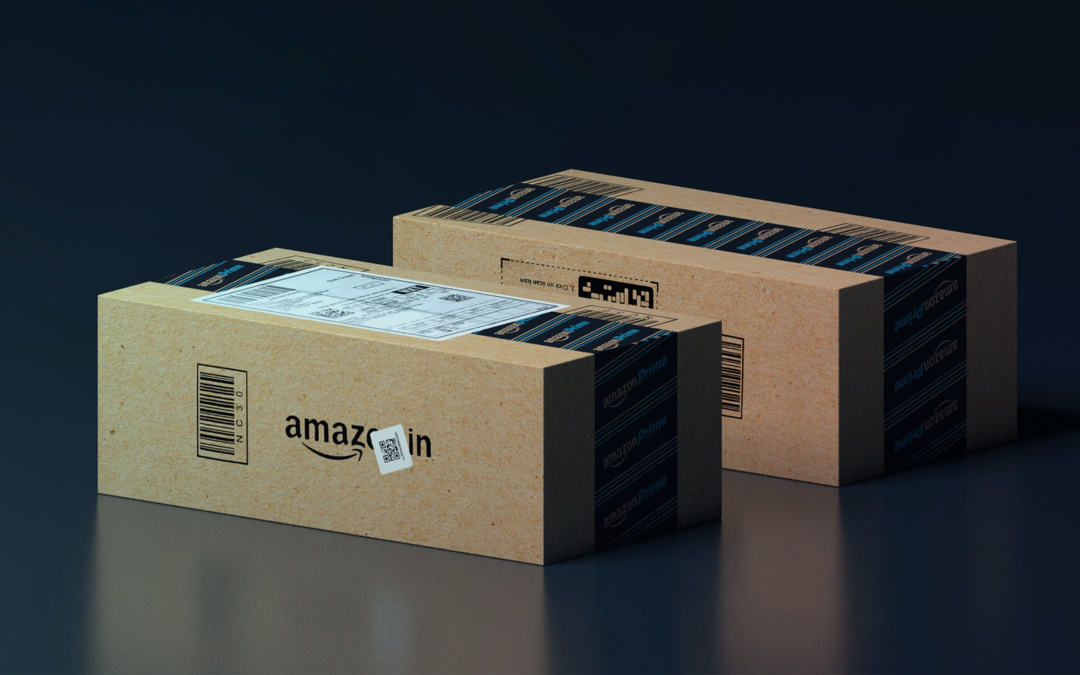Since this reform promoted by the European tax authorities came into force in 2021, the way sellers deal with their distance sales in the EU has changed.
Surely you already know that if you manage your products through Amazon’s international sales, this reform affects you, whether you are inside or outside the European Union.
In case you have any doubts, in this post we explain it to you:
- What is the One Stop Shop (OSS).
- How it affects Amazon sellers.
- How to avoid penalties from the tax authorities if you sell through Amazon.
What is the One Stop Shop (OSS)?
The OSS scheme, also known as One Stop Shop, is a new EU-wide VAT regulation, which aims to simplify VAT taxation of e-commerce.
From now on, when the volume of sales to other EU countries exceeds €10,000, VAT will be taxable in the country of destination of the goods. Assuming always that this is a private individual.
As an advantage, you will be able to make a single declaration through OSS Spain (if your company’s headquarters are located here) and the Spanish tax office will be responsible for paying the amount due to each member state.
It is no longer necessary to be registered and make an individual declaration in each EU country as long as you meet certain requirements.
One of them is that the country of storage of the product and the country of residence of the buyer must be different.
For example, if your company is based in Spain but has goods stored in Germany and you make sales within that country, then it will no longer be considered a distance sale.
As long as you ship goods from your home country, it is no longer necessary to be registered and have a VAT number for each European country to which you ship goods. It will only be compulsory in case of warehouses in the countries of destination of the goods.
To clarify this with practical examples
How should I invoice VAT with OSS?
Example 1 : You send a product from Spain to a buyer in Germany to a destination in Germany.
- You can benefit from the OSS
- You must issue an invoice with a VAT rate of 19% that you will pay to Germany through the AEAT (Spanish Tax Office).
Example 2: You send a product from Spain to a buyer in Poland but destined for France.
- You are eligible for OSS
- You must issue an invoice with a VAT rate of 20% which you will pay to France through the AEAT.
As long as you send the goods from your country, it is no longer necessary to be registered and have a VAT number for each European country to which you send goods.
Example 3: You send a product from AMAZON FBA stored in Germany (Amazon Pan-European Program). In this case it is mandatory to be registered as a company in Germany, to have a German VAT number and to pay directly to the German tax authorities.
Within the new OSS regime there are 3 types of sub-regimes:
- UOSS (EU regime) – Applies to the case explained above.
- EUOSS (EU Overseas Regime) – Applies to companies whose headquarters are outside the European Union but which provide services in a member state.
- IOSS (Import Regime) – This one-stop import shop has been created for those companies that make distance sales of imported products whose value does not exceed €150.
How does OSS affect you if you sell through Amazon?
From 1 July 2021, the old thresholds of 35,000 to 100,000 euros no longer apply, but there is a single threshold of 10,000 euros net.
In other words, sellers will have to pay VAT in each of the countries to which they send products when they exceed this threshold.
As we have already mentioned, to simplify the process, the new OSS system allows you to pay VAT on these sales through the one-stop shop in your country of residence.
But how exactly does it affect you if you sell products on Amazon?
Amazon’s Pan-European Logistics Programme was created to enable you to sell in Europe quickly and cost-effectively.
The e-commerce giant offers you to store products directly in its logistics centres across the European Union. So your products can be shipped and delivered in record time wherever your customer is.
The downside of the pan-European programme is that the products shipped are stored in the same country where the delivery is made, so it is considered a local sale and does not qualify for the one-stop shop.
As mentioned above, in the case of local sales, you will have to follow the old process. In other words, you must be registered in the country in question and pay the corresponding national VAT in that country.
Let’s clarify this point so that there is no confusion:
- Local sales: sales where the product is shipped and delivered in the same country. For example, it leaves Germany and is delivered to a customer in Germany.
- Distance sales: these are sales where the country of storage and the country of destination are different. For example, a product leaving Spain is delivered to Germany.
So, to know precisely how the new regulations affect you, it is important to consider where your warehouse is located:
Warehouses in the same country as your headquarters.
If you sell within the EU, but only use warehouses in your home country, you do not have to declare VAT in the different countries where you make your sales, you only have to register with the One Stop Shop (OSS).
Amazon warehouses outside your country
If you have chosen to use Amazon’s logistics centres outside your country, all sales made within the borders of the country where your products are stored will be treated as local sales.
Therefore, in addition to applying the VAT of the country of destination, you will have to fill in the corresponding form to declare it there.
What if the seller is outside the European Union?
In this case, it will be Amazon who will collect and be responsible for paying the VAT of the corresponding country to each tax administration.
A typical example would be an LLC in the United States that ships products to individuals residing in the European Union.
How to avoid tax penalties if you sell on Amazon
To sell on Amazon safely, the first thing you should do is to get good advice. We recommend that you go to a professional who will study your particular case and tell you how to proceed.
You should confirm, depending on your situation, whether it is necessary to apply for a tax number in each country where you sell or whether it is sufficient to be registered in the Register of Intra-Community Operators.
You also need to be sure whether you are eligible for OSS or whether, on the contrary, you will have to carry out different tax actions in some specific countries.
Bear in mind that any mistake can lead to penalties from the tax authorities.
Therefore, if you want to export your products without worrying about registering with the Single Window and calculating taxes, becoming an International Amazon Seller is a great option. Selling on Amazon Business and using their services will facilitate this process and help you avoid tax penalties.
Another thing is whether it will be economically profitable for you.
Want to make the most of Amazon?
The new EU regulation, the One Stop Shop (OSS), affects Amazon merchants, whether they are inside or outside the EU.
The rules have changed, the good news is that they have probably made it easier for you to sell in Europe.
However, if you want to sell on Amazon and make the most of your possibilities, we have something to tell you.
In this article, we’ve explored how the implementation of the One Stop Shop (OSS) impacts Amazon sellers, particularly under the new VAT regulations across Europe. If you manage sales through Amazon, it’s crucial to understand how the OSS affects both the storage and taxation of your products.
Under the OSS regime, also known as the One Stop Shop, VAT is now declared in the country of destination for the goods when sales exceed €10,000. This significantly simplifies the process for sellers, allowing a single VAT declaration through OSS Spain if that is your country of residence. However, if you use Amazon’s Pan-European Logistics Program, your products are stored and sold within the same country, meaning VAT must be managed locally and not through the OSS.
Furthermore, taxation can become complicated when products are stored in different countries within the EU. For example, if your products are stored in Amazon warehouses outside your country, VAT has been declared by Amazon in the country of delivery, treating these as local sales, which requires compliance with the specific fiscal regulations of that country. This situation impacts sellers who, under the new €10,000 threshold, will have to pay VAT in each of the countries to which they send products.
For international sellers, such as a U.S. LLC, Amazon takes care of collecting and paying the VAT directly to the tax authorities in the country of delivery, simplifying the process but also imposing new obligations and the need for precise tracking of sales and fiscal regulations.
Therefore, it is vital that you seek proper advice to avoid penalties and ensure that your operations on Amazon are both profitable and legally compliant. With tools like Boardfy, which offers Dynamic Pricing and Price Intelligence solutions, you can stay competitive while ensuring your prices adjust to market dynamics, helping you win the Amazon Buy Box. If you want to discover how Boardfy can help you maximize your sales on Amazon while navigating the complexities of OSS and VAT, click here, and we’ll tell you all about it.
This approach will allow you to better understand how the new OSS regulation affects your business on Amazon, especially in terms of fiscal compliance and pricing strategies.
Interested in learning how Boardfy can help grow your business? Contact us and discover all that we can offer you.









